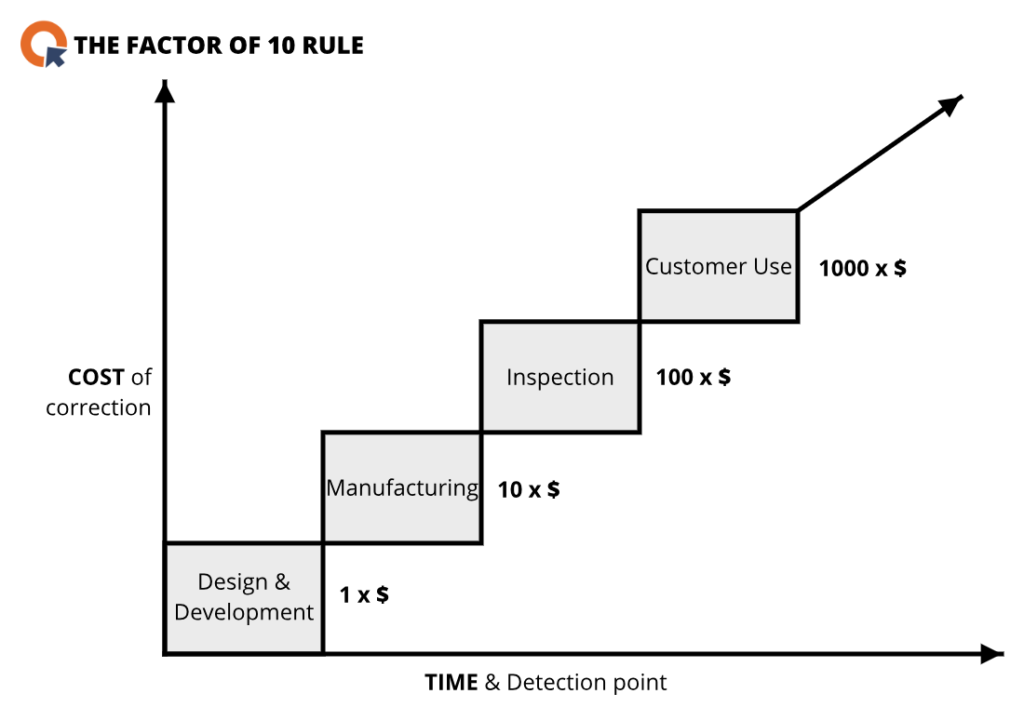Why is it often difficult to secure investment required for preventive measures related to product or process development?
If you haven’t had to deal with the significant cost of failure that could have been avoided you surely know someone who has. Or you may have read a horror story online thinking that this would never happen to you.
We have a bulletproof control system in place. No fault can go through undetected.
Is that so?
- 100% effective control systems do not exist. There are too many factors that can contribute to failure incl. operator errors, customer misuse or even computer system malfunction
- Every detection of failure (defect) generates cost (rework, scrap etc.)
- Sophisticated control mechanism creates a dangerous precedent when people may take less responsibility for their work knowing that potential issue can be picked up later in the process
The list can go on. But wait! You have spent a small fortune to act after the event. Yes, the problem has occurred, and now it’s time for the firefighting.
Many business owners and managers discover the relationship between cost and failure the hard way.
Demonstrate the cost of correction using this simple graph
Approach to prevention and detection will differ across companies. There is no single best method. However, understanding the financial consequences of reactive approach usually starts a fruitful dialogue in the business.

Please note that the relationship between cost and time is unlikely to be linear in real life. The graph has been simplified for this post.
Why the “Factor of 10 rule” should matter to you?
Look at the graph for a moment and ask yourself these questions:
- Can I afford my product to fail?
- How much will it cost me in material and labour?
- What additional cost will I incur?
- Is our business reputation at stake?
- Could this have been avoided?
The last question is of particular importance. Could this failure have been avoided?
Some different tools can be utilised as a preventive/risk mitigation measure. Some of the most popular ones can include:
- FMEA (Failure Mode and Effect Analysis)
- QFD (Quality Function Deployment)
How to protect the business from the cost of failure?
Embrace a proactive approach and reject reactive mentality.
Remember that every time the product or process development reaches the next stage, the cost of potential failure increases ten times.
Engage your team:
- Present case studies of costly failures preferably relevant to your business
- Put the cost of failure in context, g. potential lost investment in new equipment or company days out
- Send them a link to this article


23 Comments
Leave your reply.